Induction heating is widely used in industry and even consumer appliances as a contact-free heating technique with many distinct advantages.
We conclude this article by looking at how advanced amateurs can build their own induction-heating system. Induction heaters are among the many dramatic projects constructed by experimenters and hobbyists. After all, it’s impressive to heat up that metal sample in a few seconds.
Just as with Tesla coils, there are websites that go into detail describing how to build your own induction-heating system. Unlike Tesla coils, the electronic parts needed are fairly standard, as is the copper or other tubing needed for the primary coil. Also, unlike Tesla coils, the voltages used are much lower, so there is far less danger of shock, while insulation requirements and clearance dimensions are greatly reduced.
Still, building your own system is an ambitious project. Whenever you have large currents – as is inherent in induction heating – the component values are critical, and seemingly trivial changes can affect power amplifier performance and operation. Also, the high currents mean that ohmic losses at contact and connections are an issue, and these can actually overheat themselves through I2R self-heating with large current flows.
As with the Tesla coil, the schematic of an induction heater is fairly simple (Figure 1). The oscillator is based on the classic Royer design (devised in 1954 by George H. Royer). This relaxation oscillator uses a saturable-core transformer and creates square waves with just a few basic components. (This oscillator topology is also used in some unrelated DC/AC inverter circuits.) In most implementations, including the induction heater, the coarse-square wave output is often modified to be a more sine-like wave using a resonant output-tank circuit (C1/L1).
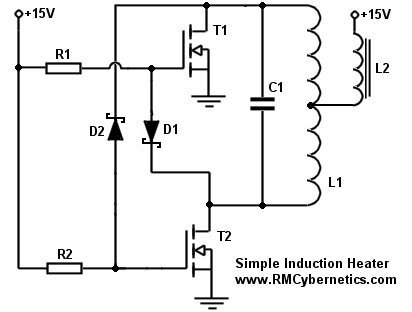
The objective of the PA is to deliver large amounts of current at a specified frequency to the low-impedance primary coil (substitute “antenna” for “coil” here, and the similarities between a low-frequency broadcast transmitter and an induction PA are clear). In contrast, the Tesla-coil power supply needs to deliver low current but at very high voltage.
The typical power supply for induction-heating projects starts with a modest-level standard AC/DC supply rated for 15 VDC/20 A, which is then used for the PA/oscillator circuit. Suppose a commercial line-operated AC/DC supply is used. In that case, the rest of the circuit is at relatively low voltage (typically, under 100 V), so it is dangerous – but not as dangerous as a Tesla coil which is at thousands of volts and prone to all sorts of voltage-induced material breakdowns.
A big challenge is in fabricating the special electromechanical components such as the primary coil and their assembly and connection. Small changes and seemingly insignificant issues can have a major impact given the current levels and affect the ability of the circuit to function well or at all. Large-gauge wires, connections, and fasteners, along with solid construction, are critical. You can even buy kits with all or most electronic parts and a circuit board, but there are still many parts you have to fabricate yourself.
In many industrial and some hobbyist designs, the self-heating of the primary coil due to unavoidable I2R loss (large currents through the coil’s DC resistance, combined with heat radiating from the workpiece back to the primary coil, can overheat the primary coil material itself. Water cooling is often used with water pumped through the primary coil tubing to prevent this occurrence. This obviously complicates the physical design and assembly (Figure 2).
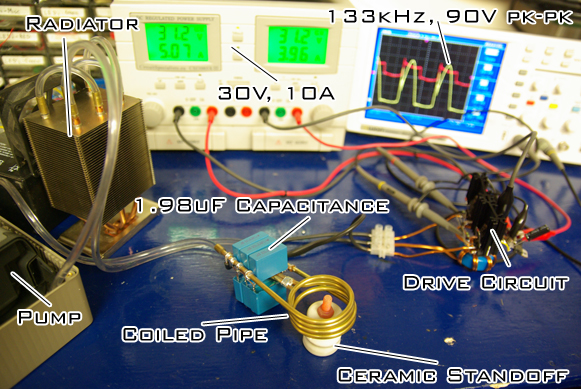
Conclusion
Induction heaters play an important role in industry and research as a non-contact, efficient, electrically driven, and very controllable technique for heating and even melting various metals. It is widely used and analyzed by scientists and metallurgists who have investigated both the underlying theory and the critical performance details, along with the efforts of electrical-power and mechanical engineers who have built the needed circuits and systems. It is also amenable to DIY projects by serious experimenters, although it should be approached with caution due to the associated currents, voltages, and temperatures.
Related EE World Content
- Using Faraday’s Law of Induction
- Reverse-conducting IGBT targets induction heating apps
- What advanced sensing techniques are used to find lost treasures? Part 2: Electromagnetic induction
- IGBTs Reduce Cost in Induction Cooking Designs
- Basics of induction
- AC challenges with inductors
Additional References
Professional and Industrial References
- Wikipedia, “Induction heating”
- AZO Materials, “What is Induction Heating and How do Induction Coils Work?”
- GH Induction Atmospheres, “What Is Induction Heating?”
- Inductoheat, “What is Induction Heating?”
- RDO Induction LLC, “Fundamentals of Induction Heating”
- UltraFlex Power Technologies, “How Induction Heating Works”
- Wikipedia, “Royer Oscillator”
Consumer Use References
- Wikipedia, “Induction Cooking” (has efficiency numbers)
- Consumer Reports, “Pros and Cons of Induction Cooktops and Ranges”
- Martha Stewart, “The Pros and Cons of Induction Cooking”
- Don’s Appliances, “Induction Cooking: What is it and How Does it Work?”
- CDA, “How does induction cooking work?”
Do-It-Yourself References
- Homemade Circuits, “2 Simple Induction Heater Circuits – Hot Plate Cookers”
- Homemade Circuits, “How to Design an Induction Heater Circuit”
- Innovation Discoveries, “How to build and induction heater and how does it work?”
- RM Cybernetics, “How Does Induction Heating Work?”
- Autodesk/Instructables, “DIY Powerful Induction Heater”

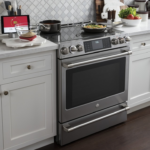
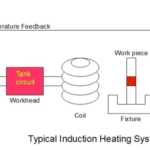

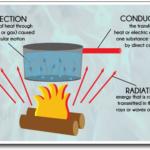
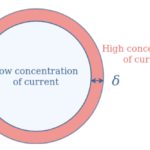

Leave a Reply